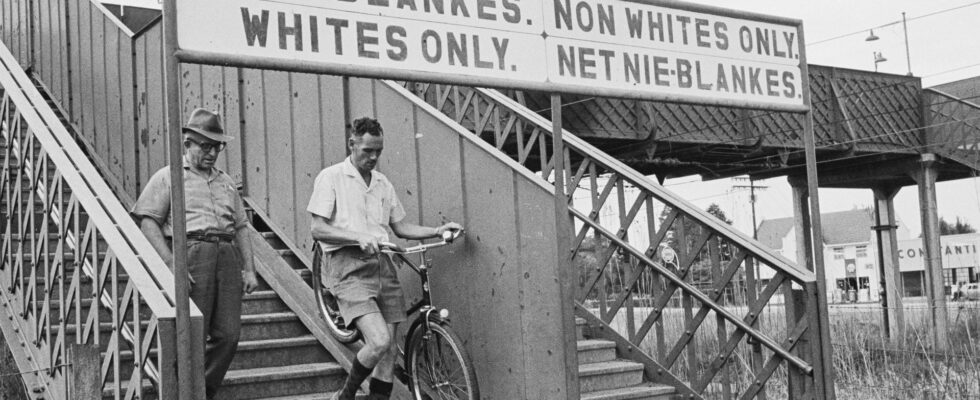In 2013, remember, John Maloof and Charlie Siskel left, with their camera, In search of Vivian Maierwinning the Oscar for best documentary two years later. Vivian Maier was this astonishing woman who, in the early 1950s, at age 25, while working as a nanny in Chicago, had spent her life photographing the street, almost never printing on paper her 150,000 negatives accumulated over the course of a more than modest life, ended in 2009 in complete anonymity. Remaining intact, the negatives were found, largely by John Maloof, in 2007, at various auctions. Identified and revealed to the general public who discovered there a modern fairy tale and above all a film whose dramaturgy overwhelmed its subject. By that I mean that the photos of this fierce amateur were not and still are not worthy of their story. Their indisputable documentary value, never succeeding in making Vivian Maier an artist. In my opinion.
This fairy tale seems to have found its masculine remake with the improbable discovery, in 2017, of 60,000 unpublished negatives by Ernest Cole in the vaults of a Swedish bank. Except Ernest Cole is not Vivian Maier. Ernest Cole, born in 1940 in Pretoria, South Africa, died in 1990 in New York, was not 20 years old when he earned his living by sweeping the floor of a photo studio in Johannesburg. How he ends up with a device in his hands is not the point. He photographs the lives of his people, in the street, a lot, but unlike Vivian, Cole, it is with rage, the one that the feeling of injustice makes crazy and sometimes artistic.
Disenchantment and misery
I was 9 years old. With my father and Charlotte, his current partner, we stopped at Johannesburg airport, before flying to Lourenço Marques (now Maputo), the capital of Mozambique, where we were going to spend a few months. We were waiting for our plane in the lobby and I had to pee. At that time, as you know, there were toilets for whites and toilets for blacks. I can’t say if it was my father who encouraged me to do so or if it was on my own initiative that I entered the black toilets. Anyway, I thought it was an excellent idea. Inside, the guys looked at me funny, but we didn’t have time to make the revolution that was going to put racism down: a policeman asked me to come out, explaining to me that I had entered the wrong door.
I keep a half-hearted feeling of this derisory and comfortable anti-apartheid protest that my father carried out by proxy, at little cost, and of this childish feat of permanent provocation that I already was.
Watching Raoul Peck’s film on Ernest Cole, I realize that at the same time, perhaps the same day, Ernest Cole left his country of misfortune, from this same airport. He was tired of photographing the scandal, he was leaving for America. For a bit, we would have crossed paths, he could have taken a photo of the blond guy exfiltrated by a police officer from the toilets reserved for blacks. It would have alerted him to what awaited him in New York. Firstly the success of his book entitled House of bondage (La Maison des Servitudes), presenting his photos taken in South Africa. Then, very quickly, after the glory, the disenchantment, the depression, because in Manhattan or in Harlem, it is always the same thing that he photographs: racism, injustice, misery, that which does not exist. he did not leave and in which he died, exhausted by twenty-three years of servitude.
Raoul Peck is right to say that the question of how the 60,000 negatives ended up in a Swedish bank is only an anecdote, it never manages to crush the genius of the photographer. This is confirmed with his (last?) photos, in color: once again it is the colors that he captures, like the craziness of the world.
.
